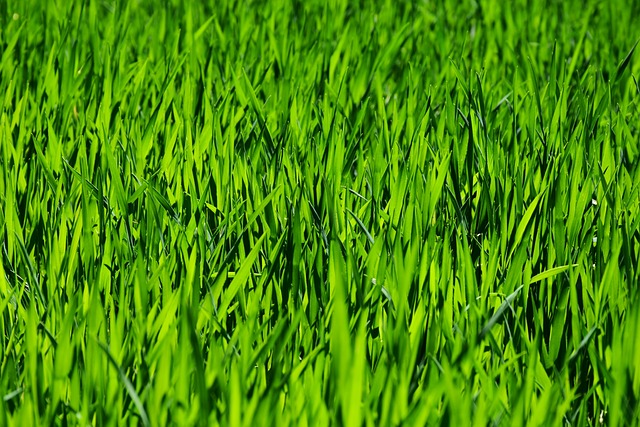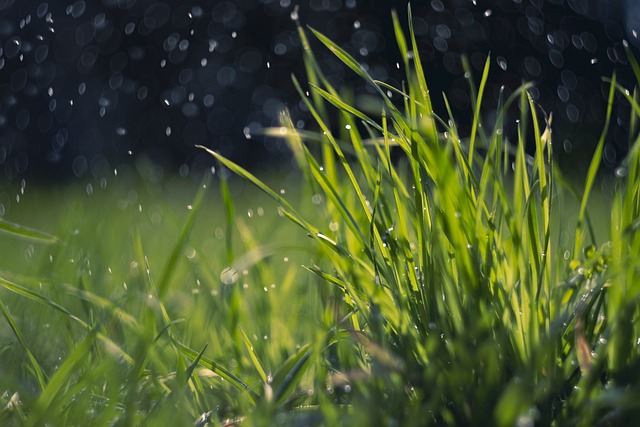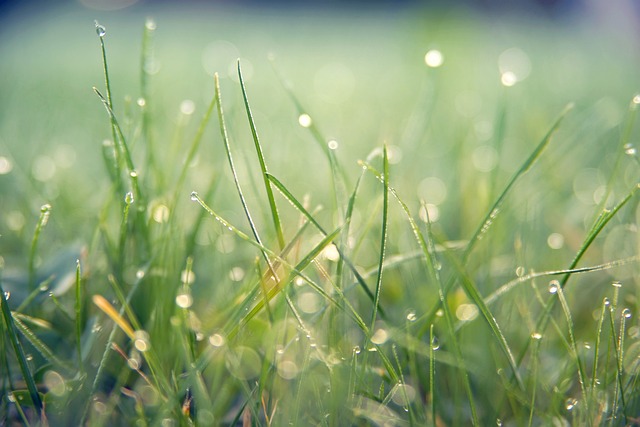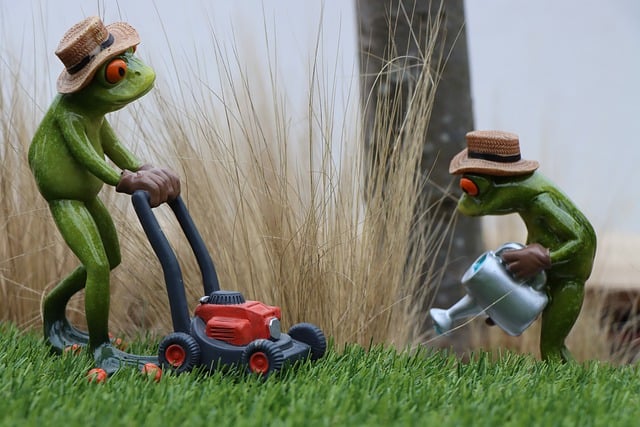Lawn care is a multifaceted practice integral to landscaping design, transforming raw areas into vibrant, aesthetically pleasing outdoor spaces. Skilled landscapers employ strategic lawn care techniques—including meticulous mowing, fertilizing, watering, and weed control—to foster lush, dense grass that enhances property aesthetics and value. Well-maintained lawns serve as the foundation for diverse landscapes, blending plant life and features to create beautiful, sustainable environments that balance functionality and visual appeal, ultimately contributing to improved air quality, reduced noise pollution, and increased property value.
“Unleash your outdoor creativity with a comprehensive guide to landscaping design and implementation. This article navigates the art of transforming your space into a vibrant oasis, focusing on lawn care as a cornerstone. Discover how proper lawn care enhances overall landscape beauty and functionality. From understanding the basics of lawn health to designing visually stunning layouts and implementing effective planning, we cover it all. Learn to choose climate-suitable plants, incorporate hardscape features, prepare your site, and maintain your masterpiece throughout the seasons.”
- Understanding Lawn Care and Its Role in Landscaping
- – Definition of lawn care
- – Importance of lawn care in overall landscaping
Understanding Lawn Care and Its Role in Landscaping

Lawn care is a fundamental aspect of landscaping design, playing a pivotal role in creating visually appealing outdoor spaces. It involves the meticulous maintenance and cultivation of grass, which forms the canvas for any landscaping project. A well-cared-for lawn not only enhances the aesthetics of a property but also contributes to its overall health and value. Skilled landscapers understand that proper lawn care is essential for achieving and maintaining a stunning outdoor environment.
In the realm of landscaping, lawn care encompasses various practices such as mowing, fertilizing, watering, and controlling weeds and pests. These activities ensure that grass remains lush, dense, and healthy. A balanced approach to lawn care allows landscapers to create diverse landscapes, incorporating various plant life and features seamlessly into manicured lawns. This combination creates a harmonious outdoor setting where functional and aesthetic considerations come together, resulting in beautiful and sustainable landscaping designs.
– Definition of lawn care

Lawn care involves the maintenance and upkeep of grass, plants, and other outdoor features to ensure a lush, healthy, and aesthetically pleasing landscape. It encompasses a range of activities, from mowing and watering to fertilizing and weeding, aimed at preserving the beauty and functionality of outdoor spaces. Effective lawn care is not just about keeping grass green; it includes creating and sustaining a vibrant and balanced ecosystem that supports both visual appeal and ecological health.
In the context of landscaping design and implementation, lawn care plays a pivotal role in transforming raw outdoor areas into scenic oases. Professional landscapers integrate lawn care practices into their comprehensive plans to create durable, visually stunning landscapes that enhance property values. By combining strategic mowing, watering, and application of fertilizers and pesticides, they ensure that lawns remain the focal point of any landscape design, providing a serene backdrop for gardens, patios, and other outdoor living spaces.
– Importance of lawn care in overall landscaping

A well-maintained lawn is a cornerstone of any successful landscaping design, as it forms the foundation upon which the entire outdoor space is built. Beyond aesthetic appeal, regular lawn care plays a vital role in ensuring the long-term health and longevity of your landscape. Proper mowing techniques, for instance, not only maintain an attractive grass height but also prevent weeds from taking root. Lawn aeration and fertilization are equally crucial; these practices improve soil structure, enhance water absorption, and provide essential nutrients that support robust grass growth. A lush, vibrant lawn acts as a harmonious backdrop to the overall landscaping, allowing other features like flowers, trees, and patio areas to shine.
In terms of functionality, a well-cared-for lawn provides a soft, natural playing surface for children and pets, reduces noise pollution, and contributes to improved air quality by absorbing carbon dioxide and releasing oxygen. Moreover, it helps with water management by slowing down rainwater runoff, preventing soil erosion, and recharging groundwater levels. Incorporating effective lawn care practices into your landscaping routine is not just about maintaining a visually appealing outdoor space; it’s about creating a sustainable and enjoyable environment that enhances the value of your property and promotes ecological balance.
Incorporating effective lawn care into your landscaping design is a key component to achieving a beautiful, thriving outdoor space. Understanding the fundamental role it plays in the overall landscape not only enhances aesthetics but also contributes to the health and longevity of plants, trees, and turf. By prioritizing proper lawn care practices, you can ensure your landscaping efforts thrive and create a vibrant, inviting environment for years to come.



